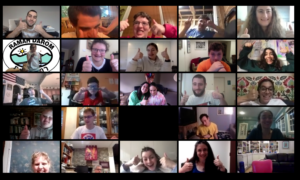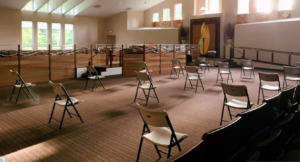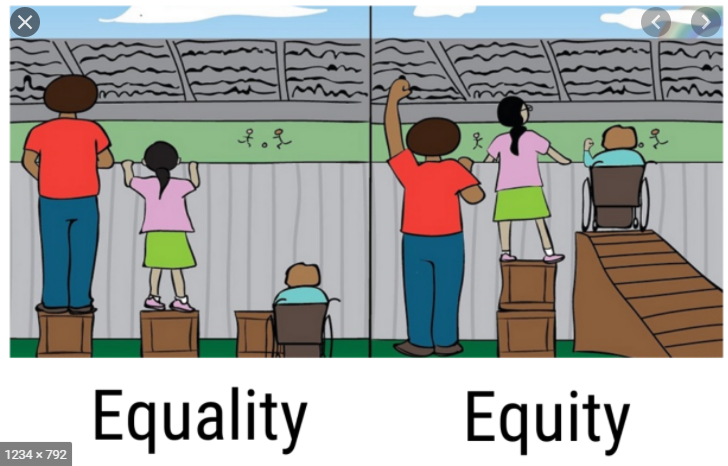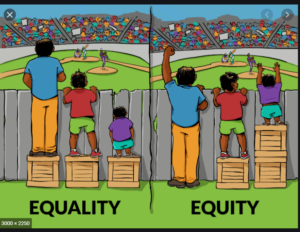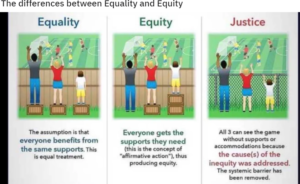Every August, I gear up for my favorite event of the year—the US Open. For the past 15 years, I have had the privilege of spending three weeks at the US Open—from the qualifying tournament through the finals. I have been a member of the media, covering the tournament for various Israeli publications. This year is different.
In the era of Covid, being a credentialed US Open media member means being “in the loop” for all tournament communications—leading up to the tournament, and during the tournament. My fellow journalists and I will be writing about tennis—from wherever we happen to be. We will be given all the match coverage and important information we need.
This week, most communications have started “X withdraws from the US Open. Y moves in to the main draw.” Yesterday, for example:
Simona Halep (ROU) has withdrawn from the US Open.
Irina Khromacheva (RUS) moves into the Main Draw.
Usue Arconada (USA) is now the first player out.
And today:
Yen Hsun Lu (TPE) has withdrawn from the US Open.
Federico Gaio (ITA) moves into the main draw.
But these communications don’t capture the excitement and positive feel—and sense that this month of tennis planned for New York just might work!
There was a media conference call today on Health and Safety Protocols–for both the 2020 Western & Southern Open (to be held in NYC) and the US Open. It was SO reassuring. Three very informed, thoughtful, articulate, and caring individuals helped reassure members of the media that there is so much good news and so much to look forward to with these two tournaments about to start. Michael Dowse, CEO and Executive Director of the USTA; Stacey Allaster, USTA Chief Executive of Professional Tennis and US Open Tournament Director; and Dr. Bernard Camins, Medical Director for Infection Prevention for the Mt. Sinai Health Systems, and Member of the USTA Medical Advisory Group were rock stars. While none of the members of the media on the call will be physically present at this year’s tournament, we are in a great position to be ambassadors, and to be positive.
Some things which caught my attention:
– Despite some of the challenges we have faced, in the women's draws we have 10 former Grand Slam champions, seven former No. 1s, and 81 of the top 100 players competing.
-On the men's side, we have seven of the top-10 players playing, eight former Grand Slam finalists, and 90 of the top 100 players.
-As of this morning, almost 350 players have entered this centralized Western & Southern and US Open
environment. We will all remain in our environment for as long as we are competing and they are competing for that prestigious ATP Masters Series title, WTA Premier title andGrand Slam title.
-The athletes have everything they need. They have comfortable housing, medical testing, transportation, practice facilities, trainers, physios, a variety of food services, and a number
of experiences for their off-time both on-site and in the official hotels. As we've seen the players come in, the energy has been really positive. They're excited to be back. They're happy to see each other. We've been thanked quite a bit by players for putting on these events. I think I would say there's a strong sense of community that we are all in this together for our sport and for our fans.
– The fundamentals of the plan are a multi-tiered system. Ultimately that's limiting the amount of interaction, the different roles and responsibilities.
There are three tiers:
Tier one, that includes all the players, their guests, tournament off staff, officials and the medical teams,
approximately about a thousand people in the tier one group.
The tier two group includes broadcasters, people who may interact but have very, very, very little interaction and exposure.
Lastly, the third tier, includes staff, whether it be security, parking, vendors. Again, their limited interactions are even less.
-“ Together with ESPN and our international broadcasters, millions of fans in more than 200 countries will have the opportunity to be inspired by what I believe are the most amazing athletes to compete in sport at the highest of levels.”
– MIKE DOWSE concluded by saying: “As I said in my opening statement, we have 100% confidence we're doing this properly. Again, it was not a host at all costs. We were very disciplined in our approach. Again, that was health and well-being number one. Number two, in the best interests of tennis. Three,
does it financially make sense for the players, the USTA and the broader tennis ecosystem. The thing I'm most excited about is the energy, as I shared earlier, from the players as they've come in and the
broader tennis community. People are starved to see these great athletes competing in these two big
tournaments. I'm really optimistic that we're going to look back at this in a few months and really be proud of what everyone accomplished, what this has done for our sport of tennis.”
One super fun fact which caught my attention: Recent reports from the tennis industry are showing the sales of entry level tennis racquets and the purchase of tennis balls have nearly doubled in May, June and July. Players from all backgrounds are discovering that tennis is the perfect post-pandemic sport. It's safe, social, great exercise, and most importantly tennis is fun.
With gyms still closed in many parts of the country, outdoor tennis (along with biking) have become great ways to get exercise and fresh air, while still socializing, safely. Hats off to the public courts which have welcomed me and various partners 3 times a week!
Let’s keep the tennis going—safely!

